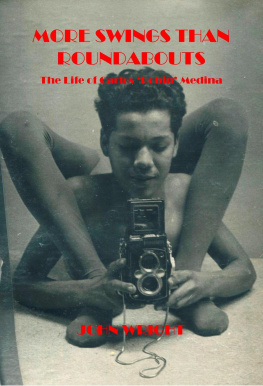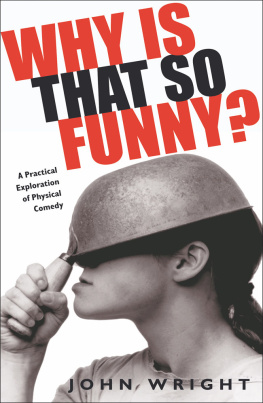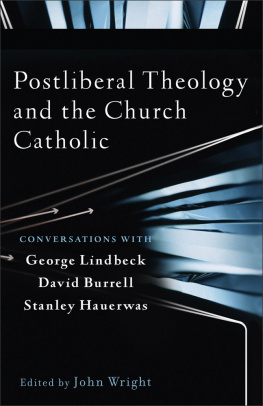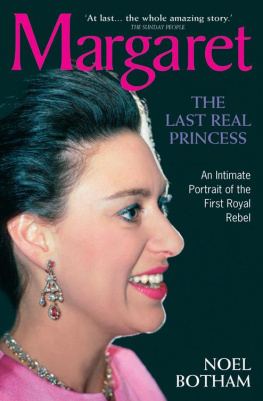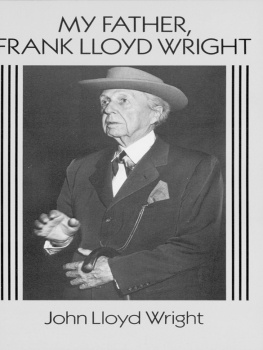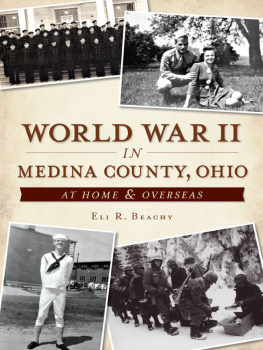MORE SWINGS THAN ROUNDABOUTS
The Life of Carlos 'Robin' Medina
JOHN WRIGHT

More Swings than Roundabouts: The Life of Carlos 'Robin' Medina Copyright 2018 APS Publications
All rights reserved.
The moral right of the author has been asserted.
No part of this publication may be reproduced, stored in or introduced into a retrieval system, or transmitted, in any form, or by any means (electronic, mechanical, photocopying, recording or otherwise) without the written permission of the publisher except that brief selections may be quoted or copied without permission, provided that full credit is given.
All the photographs in this book belong to Carlos Medina who believes he holds the copyright and has granted his permission for their use in this book. However, if you believe you took any of the photographs reproduced here, in the first instance please contact the publishers who will willingly acknowledge any original photographer or contributor.
APS Publications,
4 Oakleigh Road,
Stourbridge,
West Midlands,
DY8 2JX
www.andrewsparke.com
CONTENTS
Preface ~ 1
1. Abandoned ~ 3
2 New Home. New Family ~ 11
3 The Circus Family ~ 15
4 The First Performance ~ 25
5 A Glimpse of a Performance ~ 36
6 Solo Artist - Robin Medina Aerial Contortionist ~ 41
7 Dysfunctional Families ~ 52
8 Solo Artist - Life on the Road ~ 59
9 Circus Vargas ~ 69
10 Ten years in the air 1980-1989 ~ 84
11 Famous People ~ 98
12 Sexuality ~ 109
13 Cologne 27th Oct 1989 ~ 118
14 A New Life - The Gay Scene Revisited ~ 124
15 Dame Barbara Cartland - The Journey to a Biography ~ 132
16 First Encounter ~ 138
17 Life Now ~ 152
Acknowledgements ~ 158
PREFACE
This book is a biography of sorts of Carlos Medina who, under the stage name Robin Medina, was one of the most famous, respected, and sought-after contortionists and roman ring performers of the 20th Century.
One of the many strange things about this book is that, at the time of writing, Carlos is still alive, and the biography was written through information gleaned in discussions with him -sometimes in the way of drunken rambles, sometimes through semi-structured interviews. This ability to talk directly with the subject is a rare gift for any biographer.
This is not a scholarly work and research, where it took place, was limited to internet searches via Google and some general reading around the nature and history of circuses. The majority of the evidence for the story in the biography comes from Carlos himself, substantiated to some extent by the photographs which I have been keen to try and integrate into the text to fill out the story as much as possible. Carlos is not a literary man and so for him a short verbal account, or an old photograph, evokes the lived event which he often seemed unable to grasp was not my event, and so could not have the same significance or meaning to me. Sometimes the quality of the photographs is not good and where this is the case I thought it better to try and give a rough 'verbal' taste of the event rather than nothing at all.
Clearly for a Circus performer the keystone to his achievement is in the performance and sadly, very little, apart from the photographs of Carlos performing, actually remains. He lived in a time when Circuses were on the decline and the hand-held video, or smart phone had not come into being. I have a copy of a video from a performance he gave in South Africa and I have tried to communicate the impact of viewing this as best I can in the relevant section of the book.
This is one mans life, and another mans description of that life, and this necessary remove seems very reminiscent of the people in Platos cave, who only see a shadow of reality. I do hope the shadow which I have cast is bold enough to be able to reflect the reality of the skill, ability, courage and compassion that is Carlos Medina.
John Wright
ABANDONED
T he small hamlet of Las Dantas consists of a smattering of roughly made, single-storey cottages or pueblos. They are scattered haphazardly around the top of a small spur, which sticks out like a gnarled, bony finger, from the rugged hand of the massive Venezuelan Andes. Located in the Municipality of Bolivar, in Tchira State, in south-western Venezuela, Las Dantas seldom shows up on maps, being home to only a few hundred people, but it is here, in this almost insignificant rural location, that our world-encompassing story has its humble, if turbulent, beginnings.
Located about 800 metres (2625 feet) above sea-level, Las Dantas, wakes to find its early mornings shrouded by a cold, cloudy mist, which hangs over the small settlement like a silent ghost. The mist is soon dispersed, burning off quickly when the first rays of the sun begin to gently caress the rough grass and hard rocky soil on which Las Dantas is built. In late November, that sun-kissed caress soon turns into a relentless assault, as the temperature rises quickly to a hot 25 degrees centigrade. It was into this bright, shimmering heat haze that, on the 25th November 1950, one more, hungry, screaming, boy-child struggled into an unwelcoming world.
Very little is known about the childs mother, except that she was not married to the father. A few days after his birth, she and the child set out on the long arduous journey, up and over the mountainous terrain, heading north-east, across the border-marking-river, Tchira, into Ccuta, a prosperous Columbian City. Although only about fifty Kilometres away as the crow flies, the lack of roads, the stifling heat, and the scared, hungry, screaming child, would have made the journey both painful and exhausting. Once in Ccuta, his mother quickly found her way to the home of the man who had wronged her, and unceremoniously left the babe, wrapped in swaddling clothes, on his doorstep, then vanished, never to be heard of again.
It was not until at the age of 18, in a heart-shattering moment of revelation by his paternal grandmother, that the child would learn the truth about his early abandonment. He never met his mother, or indeed ever met anyone from his mothers side of the family. Nor does he have any memory of this painful final journey with her. Her true identity was to remain a mystery for the rest of his life. As he grew up and began to realize that she had abandoned him, so too, he chose to abandon her, never seeking to find her again.
The following day, the angry father, Carlos Alirio Medina-Torres, retraced the mothers steps, and took the child back to Las Dantas. Finding no trace of his one-night-stand, he dumped the child in the local orphanage. Although orphanag e is probably too grand a word for the small cottage that housed the good Catholic family willing to take in unwanted children. The good-hearted family were affiliated to an organization known as the Congregation for Conclusion and it was here that the abandoned child was to spend the first three-and-a-half years of his wretched life, sharing what little, food, love and affection there was, with three or four of his equally unwanted young peers.
Next page
